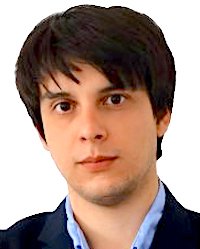
Strategies of locomotion for anguilliform aquatic robots: from model-based control laws to bio-inspired complex network of oscillators
Johann Hérault
IMT Atlantique
https://www.imt-atlantique.fr/fr/formation/parcours-et-portraits/frederic-boyer
Date(s) : 16/09/2020 iCal
14h00 - 15h00
Since the 2000s, a new generation of marine robots inspired by eels and aquatic snakes has emerged in academic contexts. In this talk, we report different strategies to control the body actuation of aquatic slender robots thanks to the bio-inspired robots of our colleagues from biorob team (EPFL).
In the first part, we present a model-based approach for control (and simulation) of swimming elongated fish and robots. The approach is a prolongation of the Lighthill Large Amplitude Elongated Body Theory (LAEBT). The fish body is modeled as an internally actuated Cosserat beam in finite deformations,. The LAEBT is revisited from this point of view, from which the fluid around the fish can be seen as a fluid Cosserat beam sliding along the fish body. The partial differential equations of the fluid and the body dynamics are derived with standard Newton’s laws and illustrated through several applications in simulation and control.
In the second part, we study the emergence of locomotive gaits produced by decentralized control law based on distributed neural oscillators controlling the cyclic motion of the servomotors. This method aims to reproduce the activity of central pattern generators, which orchestrate the muscle coordination of vertebrate animals. We investigate the effect of hydrodynamical feedback on the network of oscillators. We show that the sensory feedback produces redundancy in the oscillators chain and that the control becomes robust to oscillator disruptions. Finally, we explain the role of the sensory feedback: it produces a frequency detuning along the spinal cord, which results in a constant phase lag in the chain thanks to the diffusive effect of the CPGs.
Prof. Frédéric Boyer and Dr. Johann Hérault, IMT Atlantique, France
Catégories Pas de Catégories




